-
 Bitcoin
Bitcoin $102,881.1623
-0.60% -
 Ethereum
Ethereum $2,292.8040
-5.48% -
 Tether USDt
Tether USDt $1.0004
0.02% -
 XRP
XRP $2.0869
-2.02% -
 BNB
BNB $634.6039
-1.35% -
 Solana
Solana $136.1527
-3.00% -
 USDC
USDC $1.0000
0.01% -
 TRON
TRON $0.2728
-0.45% -
 Dogecoin
Dogecoin $0.1572
-3.70% -
 Cardano
Cardano $0.5567
-5.07% -
 Hyperliquid
Hyperliquid $34.3100
-1.20% -
 Bitcoin Cash
Bitcoin Cash $462.5691
-2.33% -
 Sui
Sui $2.5907
-5.21% -
 UNUS SED LEO
UNUS SED LEO $8.9752
1.13% -
 Chainlink
Chainlink $12.0549
-4.93% -
 Stellar
Stellar $0.2381
-2.36% -
 Avalanche
Avalanche $16.9613
-3.47% -
 Toncoin
Toncoin $2.8682
-2.36% -
 Shiba Inu
Shiba Inu $0.0...01095
-3.70% -
 Litecoin
Litecoin $81.8871
-2.43% -
 Hedera
Hedera $0.1377
-5.36% -
 Monero
Monero $310.8640
-0.68% -
 Ethena USDe
Ethena USDe $1.0007
0.03% -
 Dai
Dai $1.0001
0.03% -
 Polkadot
Polkadot $3.3103
-5.19% -
 Bitget Token
Bitget Token $4.2168
-1.95% -
 Uniswap
Uniswap $6.4643
-8.14% -
 Pepe
Pepe $0.0...09329
-7.42% -
 Pi
Pi $0.5111
-5.23% -
 Aave
Aave $235.2340
-5.77%
how to buy crypto with shakepay
With Shakepay's comprehensive platform, you can securely manage your crypto assets through its mobile app, desktop platform, and rewarding incentives program.
Jan 30, 2025 at 01:01 am
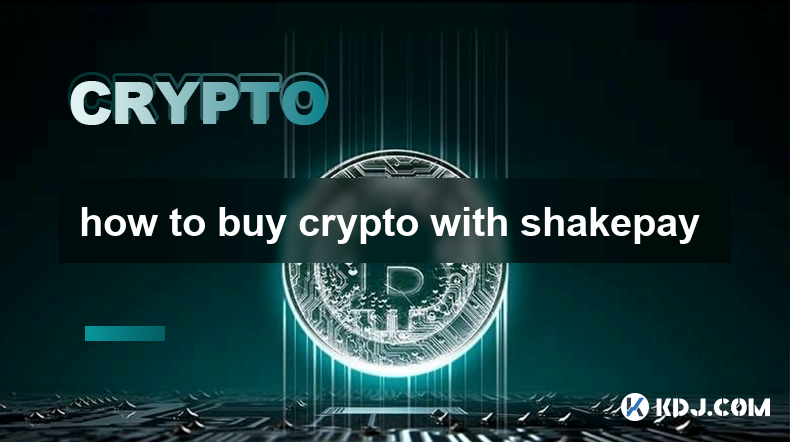
Key Points
- Shakepay is a Canadian cryptocurrency exchange that allows users to buy and sell digital assets easily and securely.
- To buy crypto with Shakepay, you need to create an account, verify your identity, and fund your account.
- Shakepay supports a variety of payment methods, including bank transfers, credit cards, and Interac e-Transfer.
- Once your account is funded, you can start buying crypto by placing a market order or a limit order.
- Shakepay offers a variety of features to help you manage your crypto assets, including a mobile app, a desktop platform, and a rewards program.
Step-by-Step Guide
1. Create a Shakepay Account
To create a Shakepay account, you will need to provide your email address, create a password, and agree to the terms of service. You will then need to verify your email address by clicking on a link that will be sent to you.
2. Verify Your Identity
Once you have created an account, you will need to verify your identity. This involves providing your name, date of birth, address, and phone number. You will also need to submit a photo of your government-issued ID.
3. Fund Your Account
There are several ways to fund your Shakepay account. You can use a bank transfer, a credit card, or Interac e-Transfer.
- Bank transfer: To fund your account with a bank transfer, you will need to provide your bank account information. Shakepay will then send you a confirmation email with instructions on how to complete the transfer.
- Credit card: To fund your account with a credit card, you will need to provide your credit card number, expiration date, and CVV. Shakepay accepts Visa and MasterCard.
- Interac e-Transfer: To fund your account with Interac e-Transfer, you will need to provide your email address and the amount you want to transfer. Shakepay will then send you an email with instructions on how to complete the transfer.
4. Buy Crypto
Once your account is funded, you can start buying crypto. There are two ways to buy crypto on Shakepay: market orders and limit orders.
- Market order: A market order is an order to buy or sell crypto at the current market price. Market orders are executed immediately.
- Limit order: A limit order is an order to buy or sell crypto at a specific price. Limit orders are only executed if the market price reaches the specified limit price.
5. Manage Your Crypto Assets
Shakepay offers a variety of features to help you manage your crypto assets. These features include:
- Mobile app: The Shakepay mobile app allows you to buy, sell, and manage your crypto assets on the go.
- Desktop platform: The Shakepay desktop platform provides a more comprehensive experience for managing your crypto assets.
- Rewards program: The Shakepay rewards program allows you to earn rewards for inviting friends to join Shakepay and for making trades.
FAQs
Q: What is the minimum amount I can buy with Shakepay?
A: The minimum amount you can buy with Shakepay is $5.
Q: What are the fees for buying crypto on Shakepay?
A: Shakepay charges a 1% fee for buying crypto.
Q: How long does it take to buy crypto on Shakepay?
A: Market orders are executed immediately. Limit orders are executed only if the market price reaches the specified limit price.
Q: What are the payment methods accepted by Shakepay?
A: Shakepay accepts bank transfers, credit cards, and Interac e-Transfer.
Q: Is Shakepay a safe platform to buy crypto?
A: Yes, Shakepay is a safe and regulated platform to buy crypto. Shakepay is registered with FINTRAC and is compliant with all applicable laws and regulations.
Disclaimer:info@kdj.com
The information provided is not trading advice. kdj.com does not assume any responsibility for any investments made based on the information provided in this article. Cryptocurrencies are highly volatile and it is highly recommended that you invest with caution after thorough research!
If you believe that the content used on this website infringes your copyright, please contact us immediately (info@kdj.com) and we will delete it promptly.
- Solana Layer-2 Heats Up: Is the Solaxy Presale the Next Big Thing?
- 2025-06-22 20:25:13
- MAGACOIN's Ascent: Following Shiba Inu's Growth Path in 2025?
- 2025-06-22 20:25:13
- Crypto Market Slumps Further Amid Geopolitical Tensions: What's Next?
- 2025-06-22 20:30:12
- Crypto to Buy Now: Navigating the Best Options in a Wild Market
- 2025-06-22 20:30:12
- Trading COIN with Risk Controls: Navigating the Future of Crypto Exchanges
- 2025-06-22 20:35:12
- Bitcoin Dominance, Mideast Conflict, and Altcoin Pressure: A Crypto Conundrum
- 2025-06-22 18:25:12
Related knowledge
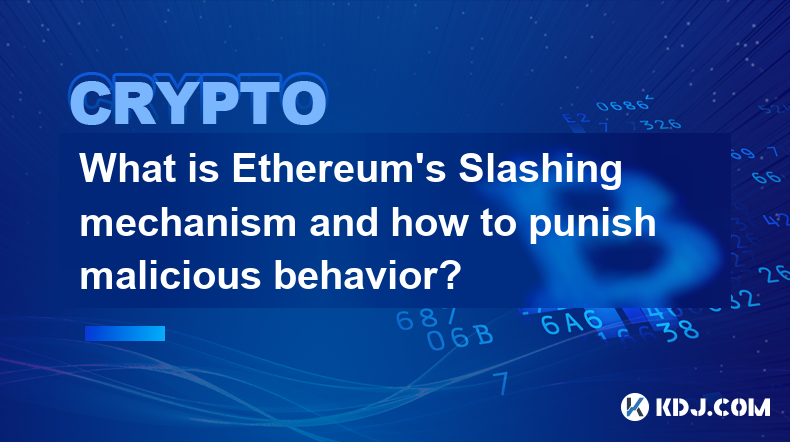
What is Ethereum’s Slashing mechanism and how to punish malicious behavior?
Feb 20,2025 at 03:08am
Key PointsOverview of slashingDifferent types of slashing in EthereumIncentives and consequences of slashingIdentifying and reporting slashed validatorsOngoing discussions and potential improvementsEthereum's Slashing Mechanism: Punishing Malicious BehaviorEthereum's slashing mechanism is an essential tool for ensuring network security and punishing mal...
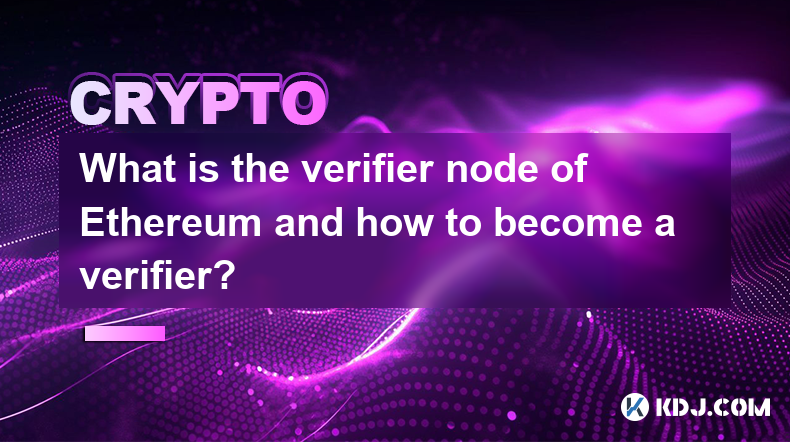
What is the verifier node of Ethereum and how to become a verifier?
Feb 19,2025 at 06:00pm
The Verifier Node of Ethereum: A Comprehensive GuideKey Points:What is a Verifier Node?How to Become a Verifier NodeResponsibilities and Rewards of a Verifier NodeMinimum Requirements for Becoming a Verifier NodePotential Difficulties in Running a Verifier Node1. What is a Verifier Node?A Verifier Node is an independent entity on the Ethereum network th...
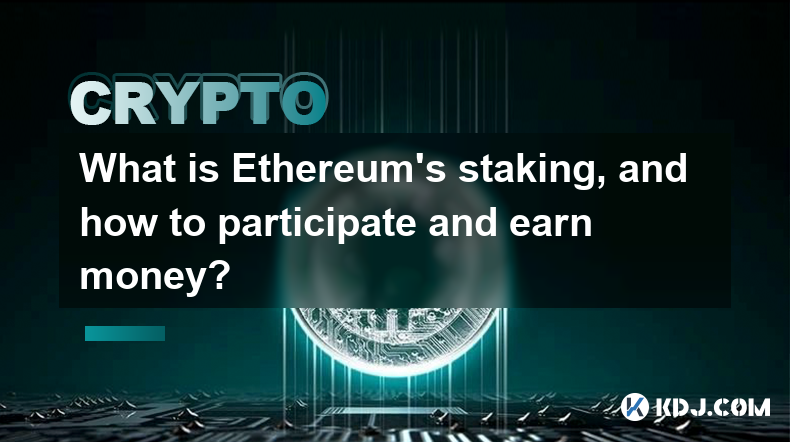
What is Ethereum’s staking, and how to participate and earn money?
Feb 19,2025 at 04:37pm
Key Points:Understanding Ethereum's Staking MechanismSteps to Participate in StakingBenefits and Rewards of StakingSecurity and Risk ConsiderationsTechnical Requirements and Hardware OptionsPotential Challenges and Troubleshooting TipsFAQs on Ethereum StakingWhat is Ethereum's Staking?Proof-of-Stake (PoS) is a consensus mechanism used in blockchain netw...
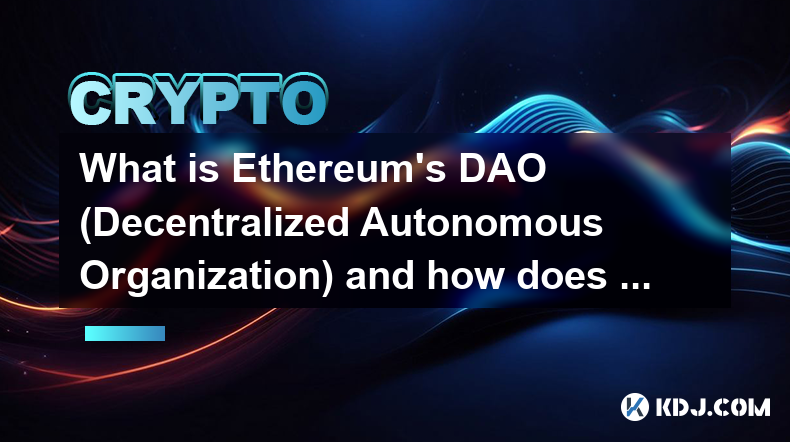
What is Ethereum’s DAO (Decentralized Autonomous Organization) and how does it work?
Feb 20,2025 at 03:12am
Key PointsDefinition and Structure of a DAOGovernance and Decision-Making in DAOsBenefits and Use Cases of DAOsChallenges and Limitations of DAOsWhat is Ethereum's DAO (Decentralized Autonomous Organization) and How Does It Work?Definition and Structure of a DAOA Decentralized Autonomous Organization (DAO) is an innovative governance and management fram...
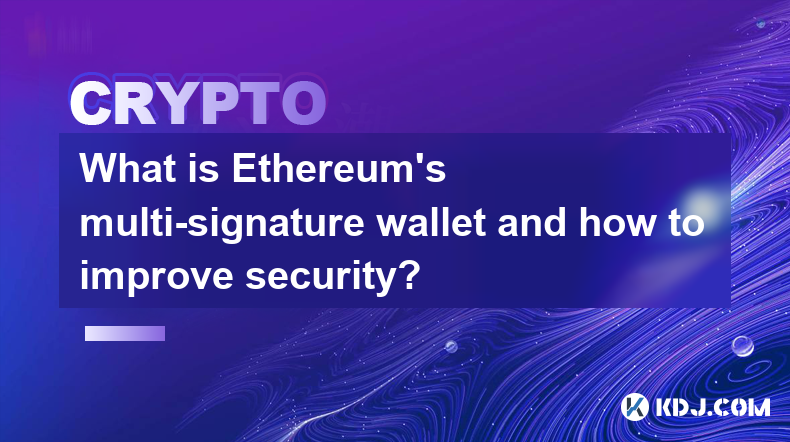
What is Ethereum's multi-signature wallet and how to improve security?
Feb 20,2025 at 02:18pm
Key Points:Understanding the Concept of a Multi-Signature WalletBenefits and Drawbacks of Multisig WalletsRequirements for Setting Up a Multisig WalletStep-by-Step Guide to Generating a Multisig WalletImplementing Strategies for Enhanced Security1. Understanding the Concept of a Multi-Signature WalletA multi-signature (multisig) wallet in the Ethereum e...

What is Ethereum's oracle and how to provide data for smart contracts?
Feb 21,2025 at 01:30am
Key Points:Understanding the concept of oracles in EthereumExploring different types of oraclesDetailed guide on how to provide data for smart contractsAddressing potential challenges and considerationsWhat is Ethereum's Oracle?Oracles are crucial components in the Ethereum ecosystem, enabling smart contracts to access real-world data and off-chain even...

What is Ethereum’s Slashing mechanism and how to punish malicious behavior?
Feb 20,2025 at 03:08am
Key PointsOverview of slashingDifferent types of slashing in EthereumIncentives and consequences of slashingIdentifying and reporting slashed validatorsOngoing discussions and potential improvementsEthereum's Slashing Mechanism: Punishing Malicious BehaviorEthereum's slashing mechanism is an essential tool for ensuring network security and punishing mal...

What is the verifier node of Ethereum and how to become a verifier?
Feb 19,2025 at 06:00pm
The Verifier Node of Ethereum: A Comprehensive GuideKey Points:What is a Verifier Node?How to Become a Verifier NodeResponsibilities and Rewards of a Verifier NodeMinimum Requirements for Becoming a Verifier NodePotential Difficulties in Running a Verifier Node1. What is a Verifier Node?A Verifier Node is an independent entity on the Ethereum network th...

What is Ethereum’s staking, and how to participate and earn money?
Feb 19,2025 at 04:37pm
Key Points:Understanding Ethereum's Staking MechanismSteps to Participate in StakingBenefits and Rewards of StakingSecurity and Risk ConsiderationsTechnical Requirements and Hardware OptionsPotential Challenges and Troubleshooting TipsFAQs on Ethereum StakingWhat is Ethereum's Staking?Proof-of-Stake (PoS) is a consensus mechanism used in blockchain netw...

What is Ethereum’s DAO (Decentralized Autonomous Organization) and how does it work?
Feb 20,2025 at 03:12am
Key PointsDefinition and Structure of a DAOGovernance and Decision-Making in DAOsBenefits and Use Cases of DAOsChallenges and Limitations of DAOsWhat is Ethereum's DAO (Decentralized Autonomous Organization) and How Does It Work?Definition and Structure of a DAOA Decentralized Autonomous Organization (DAO) is an innovative governance and management fram...

What is Ethereum's multi-signature wallet and how to improve security?
Feb 20,2025 at 02:18pm
Key Points:Understanding the Concept of a Multi-Signature WalletBenefits and Drawbacks of Multisig WalletsRequirements for Setting Up a Multisig WalletStep-by-Step Guide to Generating a Multisig WalletImplementing Strategies for Enhanced Security1. Understanding the Concept of a Multi-Signature WalletA multi-signature (multisig) wallet in the Ethereum e...

What is Ethereum's oracle and how to provide data for smart contracts?
Feb 21,2025 at 01:30am
Key Points:Understanding the concept of oracles in EthereumExploring different types of oraclesDetailed guide on how to provide data for smart contractsAddressing potential challenges and considerationsWhat is Ethereum's Oracle?Oracles are crucial components in the Ethereum ecosystem, enabling smart contracts to access real-world data and off-chain even...
See all articles
























































































